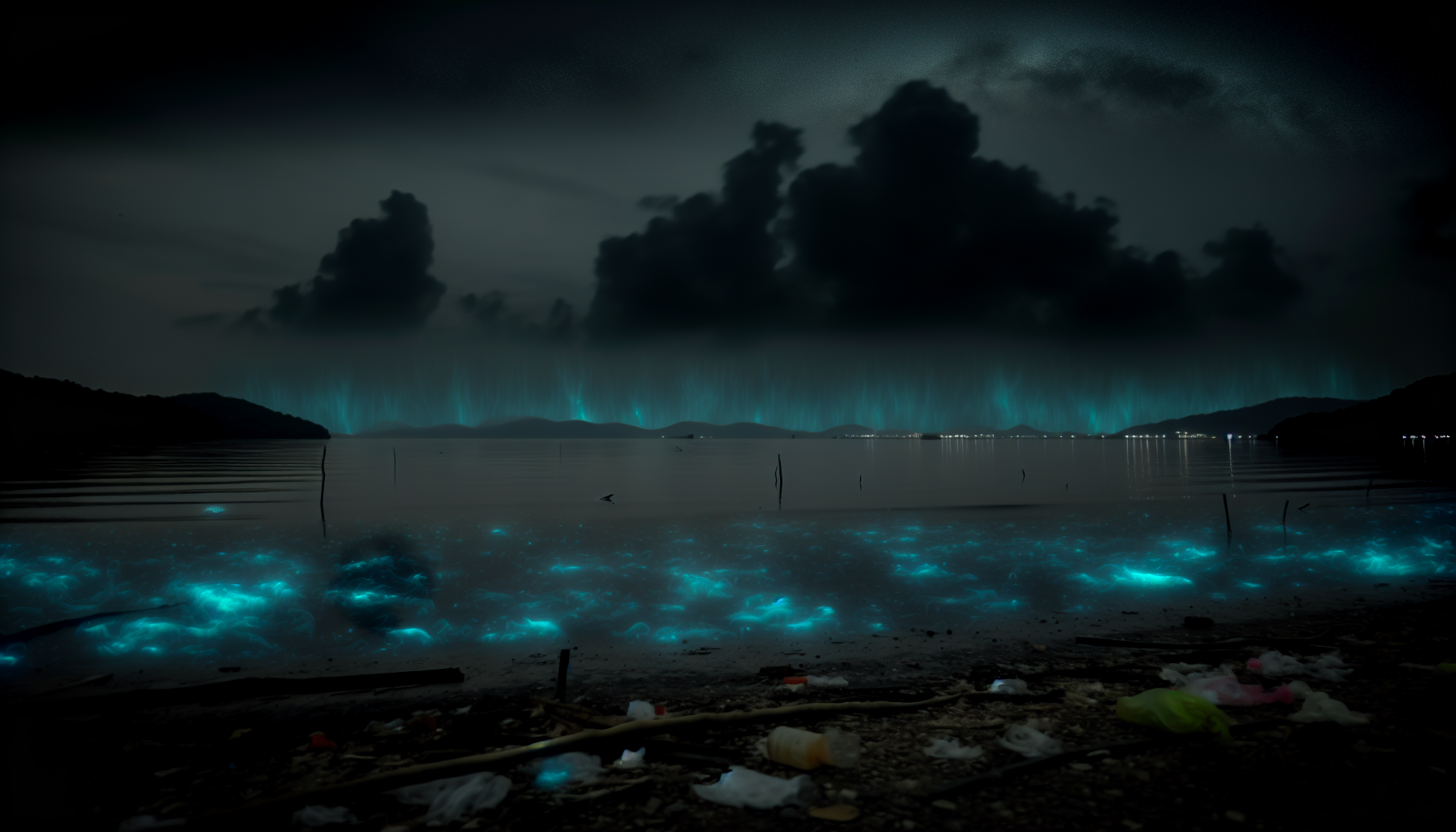The magical, surrealist glow that once danced upon the night waves of our bioluminescent bays has dimmed. The light of life, an ethereal spectacle cherished by romantics and naturalists alike, is flickering out. We stand on the shoreline of despair, witnessing the slow death of a phenomenon as oceanic marvels succumb to environmental collapse.
Bioluminescence — the product of biological alchemy where microscopic dinoflagellates light up in defense or attraction — has long been a lure for ecotourists and source of local lore. Yet, these glowing bays are now eerily silent. The sights of neon blues and greens are replaced by murky darkness, a visual lament to our environmental apathy.
Scientists have attributed this catastrophic loss to several factors, chiefly amongst them is the increase in water pollution. Inputs from agriculture run-off, leakage of wastewater, and the insidious spread of microplastics have turned these delicate ecosystems into hostile environments for dinoflagellates. Our previous report, ‘Beneath the Murk, Microplastics Take Over Marine Microcosms’, underscored the blight of microplastics in marine habitats — a phenomenon evidently robbing the bays of their glow.
But the photic plight doesn’t end at pollution. Climate change, with all its meteorological whims, has modified oceanic conditions beyond the survival threshold for many species. Raised temperatures, acidification, and altered currents converge in a multifaceted assault on bioluminescent bays. ‘Where once the water shimmered, now only the somber ripple of a warming sea remains.’
‘Darkened Tides’ hears the voices of those whose livelihoods are anchored to the bays. Fisherfolk speak of nights where nets came up without sparkle, signifying not just an ecological shift but an economic blow. As one local says, ‘The bay’s darkness mirrors our gloomy prospects.’
Can anything be done? There are restoration efforts and protective policies proposed to salvage what’s left. Despite these noble endeavors, the stark reality is that the scales have tipped too far. Perhaps monitoring and mitigating further damage to other bioluminescent sites is the most pragmatic approach left to us.
The loss of our glowing bays is not merely an aesthetic tragedy, it’s an emblem of a wider environmental crisis. Bioluminescence, after all, is more than a beautiful curiosity; it’s an indicator of marine health, a beacon of biodiversity. As these lights dim, so does the hope for ecosystems worldwide already teetering on the brink.
As we ponder the darkened waters, we are reminded that, though there may be no place for optimism in our times, the pressing need for environmental stewardship remains. To deny action is to surrender to a future where the only glow comes from the haunting glare of irreversible loss.
In the gloaming of our dimming world, humanity stands at the edge of reckoning. The Darkened Tides serve not as a tale of caution but as an epitaph for lost wonders and ignored warnings. The question now, is not what we stand to lose, but what we are willing to fight to save.
